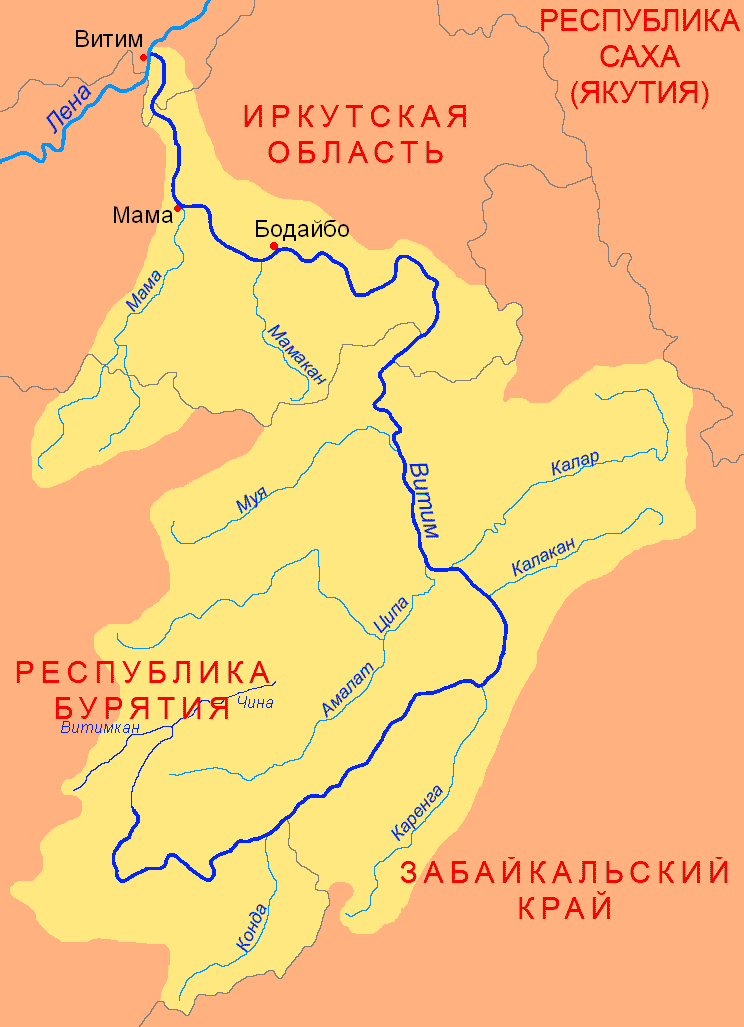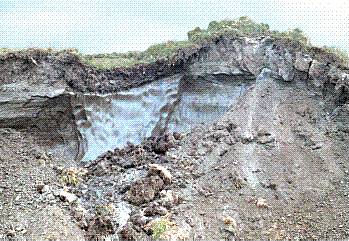|
Kalakan (river)
The Kalakan (russian: Калакан) is a river in Transbaikalia, southern East Siberia, Russia. It is long, and has a drainage basin of . Google Earth The Kalakan gives its name to the Kalakan Range, as well as to the Kalakan Depression. The Kalakan river is a destination for rafting. Taimen and lenok are among the fish species found in the river. Course The Kalakan is a right tributary of the Vitim. Its sources are in the Kalakan Range, at the eastern edge of the Vitim Plateau, where it flows first to the north. After a short distance it bends to the left and flows in a WSW direction along the feet of the Yankan Range, which separates it from the course of the Kalar to the north.Kalakan / '' |
Kalakan Range
Kalakan prs, کلکان, is a village located in the center of Kalakan District, Kabul Province, Afghanistan. See also *Kalakan District *Kabul Province Kabul ( Persian: ), situated in the east of the country, is one of the thirty-four provinces of Afghanistan. The capital of the province is Kabul city, which is also Afghanistan's capital and largest city. The population of the Kabul Province is ... References Populated places in Kabul Province {{Kabul-geo-stub ... [...More Info...] [...Related Items...] OR: [Wikipedia] [Google] [Baidu] |
Yankan Range
Yankan (russian: Янкан) is a rural locality (a selo) in Solovyovsky Selsoviet of Tyndinsky District, Amur Oblast, Russia. The population was 53 as of 2018. There is 1 street. Geography Yankan is located 140 km south of Tynda Tynda (russian: Ты́нда) is a town in Amur Oblast, Russia, located northwest of Blagoveshchensk. It is an important railway junction, informally referred to as the capital of the Baikal-Amur Mainline. Its population has declined sharply in r ... (the district's administrative centre) by road. Solovyovsk is the nearest rural locality. References Rural localities in Tyndinsky District {{AmurOblast-geo-stub ... [...More Info...] [...Related Items...] OR: [Wikipedia] [Google] [Baidu] |
Vitim ;
{{Set index article, populated places in Russia ...
Vitim (russian: Витим) is the name of several inhabited localities in Russia. Modern localities *Vitim, Sakha Republic, an urban locality (an urban-type settlement) in Lensky District of the Sakha Republic * Vitim, Republic of Buryatia, a rural locality (a settlement) in Muysky Selsoviet of Muysky District in the Republic of Buryatia; Alternative names *Vitim, alternative name of Romanovka, a '' selo'' in Vitimsky Selsoviet of Bauntovsky District in the Republic of Buryatia Buryatia, officially the Republic of Buryatia (russian: Республика Бурятия, r=Respublika Buryatiya, p=rʲɪsˈpublʲɪkə bʊˈrʲætʲɪjə; bua, Буряад Улас, Buryaad Ulas, , mn, Буриад Улс, Buriad Uls), is ... [...More Info...] [...Related Items...] OR: [Wikipedia] [Google] [Baidu] |
Permafrost
Permafrost is ground that continuously remains below 0 °C (32 °F) for two or more years, located on land or under the ocean. Most common in the Northern Hemisphere, around 15% of the Northern Hemisphere or 11% of the global surface is underlain by permafrost, with the total area of around 18 million km2. This includes substantial areas of Alaska, Greenland, Canada and Siberia. It can also be located on mountaintops in the Southern Hemisphere and beneath ice-free areas in the Antarctic. Permafrost does not have to be the first layer that is on the ground. It can be from an inch to several miles deep under the Earth's surface. It frequently occurs in ground ice, but it can also be present in non-porous bedrock. Permafrost is formed from ice holding various types of soil, sand, and rock in combination. Permafrost contains large amounts of biomass and decomposed biomass that has been stored as methane and carbon dioxide, making tundra soil a carbon sink. As global ... [...More Info...] [...Related Items...] OR: [Wikipedia] [Google] [Baidu] |
Lena (river)
The Lena (russian: Ле́на, ; evn, Елюенэ, ''Eljune''; sah, Өлүөнэ, ''Ölüöne''; bua, Зүлхэ, ''Zülkhe''; mn, Зүлгэ, ''Zülge'') is the easternmost of the three great Siberian rivers that flow into the Arctic Ocean (the other two being the Ob and the Yenisey). Permafrost underlies most of the catchment, 77% of which is continuous. It is long, and has a drainage basin of . The Lena is the eleventh-longest river in the world, and the longest river entirely within Russia. Course Originating at an elevation of at its source in the Baikal Mountains south of the Central Siberian Plateau, west of Lake Baikal, the Lena flows northeast across the Lena-Angara Plateau, being joined by the Kirenga, Vitim and Olyokma. From Yakutsk it enters the Central Yakutian Lowland and flows north until joined by its right-hand tributary the Aldan and its most important left-hand tributary, the Vilyuy. After that, it bends westward and northward, flowing betwee ... [...More Info...] [...Related Items...] OR: [Wikipedia] [Google] [Baidu] |
Buryatia
Buryatia, officially the Republic of Buryatia (russian: Республика Бурятия, r=Respublika Buryatiya, p=rʲɪsˈpublʲɪkə bʊˈrʲætʲɪjə; bua, Буряад Улас, Buryaad Ulas, , mn, Буриад Улс, Buriad Uls), is a republic of Russia located in Siberia. It is the historical native land of indigenous Buryats. Formerly part of the Siberian Federal District, it has been a part of the Russian Far East since 2018. Its capital is the city of Ulan-Ude, which means Red Gateway in Buryat Mongolian. Its area is with a population of 978,588 ( 2021 Census). Geography The republic is located in the south-central region of Siberia along the eastern shore of Lake Baikal. *Area: *Borders: **Internal: Irkutsk Oblast (W/NW/N), Zabaykalsky Krai (NE/E/SE/S), Tuva (W) **International: Mongolia ( Bulgan Province, Khövsgöl Province and Selenge Province) (S/SE) **Water: Lake Baikal (N) *Highest point: Mount Munku-Sardyk () Rivers Major rivers include ... [...More Info...] [...Related Items...] OR: [Wikipedia] [Google] [Baidu] |
Meandering
A meander is one of a series of regular sinuous curves in the Channel (geography), channel of a river or other watercourse. It is produced as a watercourse erosion, erodes the sediments of an outer, concave bank (cut bank) and deposits sediments on an inner, convex bank which is typically a point bar. The result of this coupled erosion and sedimentation is the formation of a sinuous course as the channel migrates back and forth across the axis of a floodplain. The zone within which a meandering stream periodically shifts its channel is known as a meander belt. It typically ranges from 15 to 18 times the width of the channel. Over time, meanders migrate downstream, sometimes in such a short time as to create civil engineering challenges for local municipalities attempting to maintain stable roads and bridges.Neuendorf, K.K.E., J.P. Mehl Jr., and J.A. Jackson, J.A., eds. (2005) ''Glossary of Geology'' (5th ed.). Alexandria, Virginia, American Geological Institute. 779 pp. Charlto ... [...More Info...] [...Related Items...] OR: [Wikipedia] [Google] [Baidu] |
Floodplain
A floodplain or flood plain or bottomlands is an area of land adjacent to a river which stretches from the banks of its channel to the base of the enclosing valley walls, and which experiences flooding during periods of high discharge.Goudie, A. S., 2004, ''Encyclopedia of Geomorphology'', vol. 1. Routledge, New York. The soils usually consist of clays, silts, sands, and gravels deposited during floods. Because the regular flooding of floodplains can deposit nutrients and water, floodplains frequently have high soil fertility; some important agricultural regions, such as the Mississippi river basin and the Nile, rely heavily on the flood plains. Agricultural regions as well as urban areas have developed near or on floodplains to take advantage of the rich soil and fresh water. However, the risk of flooding has led to increasing efforts to control flooding. Formation Most floodplains are formed by deposition on the inside of river meanders and by overbank flow. Wherev ... [...More Info...] [...Related Items...] OR: [Wikipedia] [Google] [Baidu] |
Great Soviet Encyclopedia
The ''Great Soviet Encyclopedia'' (GSE; ) is one of the largest Russian-language encyclopedias, published in the Soviet Union from 1926 to 1990. After 2002, the encyclopedia's data was partially included into the later ''Bolshaya rossiyskaya entsiklopediya'' (or ''Great Russian Encyclopedia'') in an updated and revised form. The GSE claimed to be "the first Marxist–Leninist general-purpose encyclopedia". Origins The idea of the ''Great Soviet Encyclopedia'' emerged in 1923 on the initiative of Otto Schmidt, a member of the Russian Academy of Sciences. In early 1924 Schmidt worked with a group which included Mikhail Pokrovsky, (rector of the Institute of Red Professors), Nikolai Meshcheryakov (Former head of the Glavit, the State Administration of Publishing Affairs), Valery Bryusov (poet), Veniamin Kagan (mathematician) and Konstantin Kuzminsky to draw up a proposal which was agreed to in April 1924. Also involved was Anatoly Lunacharsky, People's Commissar of Educatio ... [...More Info...] [...Related Items...] OR: [Wikipedia] [Google] [Baidu] |
Kalar (river)
The Kalar (russian: Калар), known as the Levoy Chinoy in its upper section, is a river in Zabaykalsky Krai, southern East Siberia, Russia. It is long, and has a drainage basin of . The area through which the river flows is mountainous in most of its length with frequent rapids in the riverbed.Google Earth The waters are rich in fish, including grayling, lenok, taimen and whitefish, among other species. In the International scale of river difficulty the Kalar is a Class III - IV destination for rafting and kayaking. The Kalar has lent its name to a number of other geographic features, including the Kalar Range, the local Kalar District, as well as Sredny Kalar (Middle Kalar) village by its right bank from its mouth. Course The Kalar is a right tributary of the Vitim. Its sources are between the Udokan Range and the Kalar Range subranges of the Stanovoy Highlands. In its upper course it cuts eastwards across the Kalar Range in a wide arc as the Levoy Chinoy. The river fl ... [...More Info...] [...Related Items...] OR: [Wikipedia] [Google] [Baidu] |
Vitim Plateau
Vitim Plateau is a plateau in Buryatia and Zabaykalsky Krai, Russia. The plateau is sparsely populated, the main settlements are Romanovka and Bagdarin. An area of the plateau is an ancient volcanic field with a number of cinder cones and volcanoes, the last of which was active about 810,000 years before present. The P436 regional road connecting Ulan-Ude and Chita passes through Romanovka across the plateau. Geography The Vitim Plateau lies along the headwaters of the Vitim River, a tributary of the Lena between the Southern Muya Range to the north, the Ikat Range to the west, the Yablonoi Mountains to the south, and in the east with the lower reaches of the Kalakan River to the right bank of the lower reaches of the Karenga River (both Vitim tributaries) and the latter's right tributary, the Bugarikta. The Vitim River begins at the confluence of the China and Vitimkan rivers on the plateau and makes a wide bend around the volcanic zone before flowing northwards. R ... [...More Info...] [...Related Items...] OR: [Wikipedia] [Google] [Baidu] |
South Siberian System
The South Siberian Mountains ( rus, Южно-Сибирские горы) are one of the largest mountain systems of the Russian Federation. The total area of the system of mountain ranges is more than 1.5 million km². The South Siberian Mountains are located in the Siberian and Far Eastern Federal Districts of Russia, as well as partly in Mongolia. The territory of the mountain system is one of the Great Russian Regions. Geography The system is composed of a number of ranges aligned in an east–west direction stretching for almost . Part of them are near the border with Mongolia and China, while others rise further north. To the south the South Siberian ranges merge with the Mongolian and Chinese mountain chains and plateaus. In the west lies the Dzungarian Basin and to the east the Mongolian Plateau. To the north the South Siberian Mountains merge with the West Siberian Lowland and the Central Siberian Plateau, both on the Russian side. To the southeast the Baikal Range i ... [...More Info...] [...Related Items...] OR: [Wikipedia] [Google] [Baidu] |




